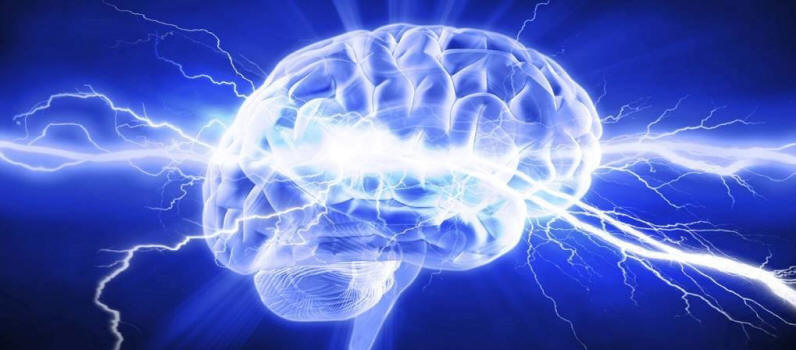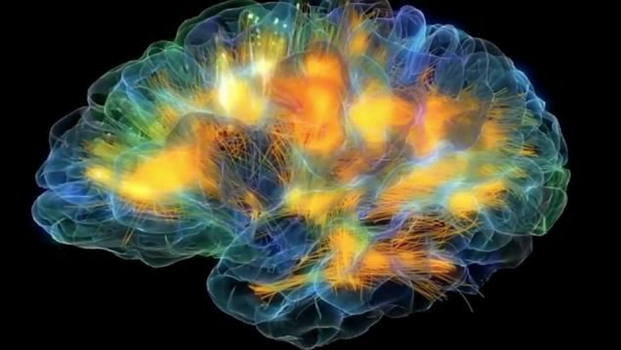 |
Epileptic Seizures |

IDIOPATHIC EPILEPSY
|
S |
eizures (fits, convulsions, tremors) are a common disorder in dogs. When tests are done and no reason can be found for the seizure, the disorder is referred to as Generalised Primary or Idiopathic epilepsy. The term “idiopathic” means that there is no known cause for the problem, and that the seizures are not the result of another disorder. This is the type of epilepsy which is usually considered to have an inherited basis.
Idiopathic epilepsy occurs in nearly 6% of all dogs, and the problem is more prevalent in some breeds than others. Test breeding of epileptic dams and sires done by veterinary researchers have produced incidences of epilepsy in the offspring ranging from between 38% in affected to non-affected dogs, to 100% when breeding together two affected dogs.
A seizure is an abnormal, uncontrolled firing of neurons in the brain. They are a sign of irritation of the brain tissue, just as coughing is a sign of irritation of the respiratory tract. The brain exists in a delicate state of chemical and physical balance which can be upset by a number of factors. If the balance in the brain shifts too far, brain cells (neurons) may become over stimulated, and a seizure may result. The “seizure threshold” is the point up to where the seizure occurs.
Seizure Indicators and stages
A seizure is commonly preceded by an altered state, restlessness, salivation, anxiety or nervousness. When the dog senses that a seizure is imminent some dogs will show signs that an observant owner will learn to recognize, but on occasion there is no warning at all. Seizures more often occur in early morning or late evening. Rage Syndrome, in which a normally gentle dog attacks the closest object which could be a person, has been reported as most often occurring when the dog awakens from a deep sleep.
The actual seizure itself (ICTUS) usually follows. The dog becomes unresponsive, may turn in circles before collapse, snap and bite at imaginary objects before or just collapse with body and legs rigid, turning to involuntary limb movements such as paddling or kicking, sometimes violent, sometimes not so. There is often much salivation leading to frothing at the mouth and in some cases involuntary urination and defecation. This can put much stress on the heart, lungs and circulation of the dog, his body temperature may rise due to the muscle activity and he may not breathe adequately, meaning he could suffer brain damage or death in rare cases.
Seizures are divided into GENERALISED (grand mal, mild or petit mal) CLUSTER and STATUS EPILEPTICUS. Generalized seizures are dramatic and thankfully short in duration, Petite Mal or partial seizures may be brief, hardly noticeable, or dramatic. Examples are a few seconds of lost consciousness or disorientation, staring, upward rotation of eyes, twitching, or in complex partial seizures, chewing, licking, whining or barking, bizarre behaviour such as snapping at imaginary flies, cowering or hiding, or pacing in circles. There can also be focal or partial seizures which affect a certain part of the body, for instance, the face or just one limb. This may progress to involve the entire body. The fact that these seizures start in a local area suggests that a specific area in the brain is damaged, perhaps due to a brain tumour or infection.
Cluster seizures are characterized by two or more seizures within a few minutes or hours but with the patient regaining consciousness between the seizures. A single seizure or even a cluster seizure of short duration is rarely life-threatening but frequent seizures may lead to status epilepticus.
Status epilepticus is defined as one continuous seizure lasting several (5 or more) minutes or two or more individual seizures without full recovery of consciousness between. This is a medical emergency requiring prompt treatment since continuous seizure activity lasting over 30 minutes can cause life-threatening abnormalities and brain damage.
The post ictal stage is the period of time after the seizure when the dog may remain lethargic and weak, may pace for a time, bump into things, some become very fearful and may bite because of their disoriented state. Caution is advised when dealing with a dog coming out of a seizure and when starting to seize. Others on the other hand, act normally quite soon after.
To be considered a true seizure, there must be an alteration in the level of consciousness. If the dog is conscious, responsive, aware of his surroundings, awakened easily from a sleep state, he is not having a seizure, twitching and jerking motions may occur in a sleep state. Heart and lung problems can sometimes result in weakness and collapse, and middle ear infections can cause dizziness and disorientation.
Many factors can trigger uncontrolled firing of the neurons of the brain. When a seizure is the result of an identifiable cause, the disorder is known as symptomatic or secondary epilepsy.

Firing Neurons
There can be many medical reasons for seizures
BRAIN TUMOURS (more common in dogs over 5 years old).
HEAD INJURY
STROKE can be caused either by bleeding in the brain or by deficiency of the blood flow to the brain tissue.
HYPOGLYCAEMIA or low blood glucose (sugar)
HYPOXAEMIA or Low blood oxygen causing lack of oxygen available to the brain. This can be due to poor lung function.
LIVER INFECTION (causing elevated blood ammonia levels), CIRRHOSIS or a LIVER SHUNT.
INFLAMMATORY OR INFECTIOUS DISEASE OF THE NERVOUS SYSTEM (Lyme disease, Distemper, Rabies, Toxoplasmosis, Encephalitis and Meningitis).
INGESTION OF TOXINS (such as lead, caffeine chocolate). EXPOSURE TO PESTICIDES such as organophosphates (in certain flea control products), slug pellets etc.
BOTULISM toxins sometimes produced by bacteria in food.
INTESTINAL PARASITE BURDEN can cause severe anaemia and hypoglycaemia. Larval forms of some parasites migrate to the liver and brain.
LOW SERUM CALCIUM OR MAGNESIUM LEVELS (such as eclampsia in a lactating bitch).
BLOOD SODIUM OR POTASSIUM IMBALANCES caused by dehydration or kidney problems.
KIDNEY FAILURE (causing high levels of uremic toxins)
HYPERTHERMIA caused by fever or heat stroke.
THYROID HORMONE DEFICIENCY (Hypothyroidism) or HYPERACTIVE THYROID (Hyperthyroidism)
If your dog has a seizure, don’t panic.
Check the clock and make a note of how many seconds or minutes the seizure
activity lasts. Keep your dog in a safe environment until the seizure is over.
Note what type of abnormal muscular activity happens, so you can describe it for
your vet. Do not put anything in your dog’s mouth. Remain by your dog to comfort
him. Call your vet for further advice. If the seizure lasts more than a few
minutes, take your dog to the closest veterinary facility for immediate care. If
your dog has recurrent seizures (more than once in 24 hours), again, seek
immediate medical assistance.
Treatment Choices
Determining the cause is essential for making appropriate treatment choices, and to assist in breeding decisions. You should seek the advice of your veterinarian. Your vet will obtain a medical history, and a full exam including a neurological exam. He will do blood tests, a urinalysis and faecal exam to look for any possible cause for the seizures. Other exams may include x-ray or ultrasound of the abdomen, EEG to evaluate brain waves, skull x-ray or head MRI, and a cerebrospinal fluid analysis if infection is suspected. Treatment will depend upon the cause of the seizure.
In the case of idiopathic epilepsy, if your dog experiences seizures more frequently than once a month, your vet may decide to place your dog on seizure medication. Antiepileptic drugs do not cure epilepsy, they simply control the seizures. Life-long therapy may be expected. The drugs increase inhibition in the brain, increase the seizure threshold, and thus make seizures less likely. This often results in side effects such as sedation, un-coordinated movements and appetite stimulation. These effects lessen with time as the body becomes used to the medication. The number of dogs who have serious side effects from the medication is small and usually preventable through regular careful health monitoring and rechecks are essential, and a thorough physical should be done at least yearly.
PHENOBARBITAL(Pb) is inexpensive and effective in 60 to 80% of dogs, many vets feel it is better to start at a higher maintenance dose and then reduce dosage to achieve a steady blood level. A few days are required for its effect to be achieved and to determine the strength of sedation on the dog. Phenobarbital comes with some side effects of sedation, ataxia (hind end weakness and loss of co-ordination), increased urination, huner and thirst, which diminish as the dog develops tolerance to the medication.
Pb is eliminated by the liver and over time may cause liver damage. Your vet will want to monitor liver function on a regular basis to avoid this problem.
POTASSIUM BROMIDE (KBr) is another effective anticonvulsant. KBr is usually used along with phenobarbital therapy that fails to completely control seizures. KBr is believed to control 75% of seizures that can’t be prevented with phenobarbital alone.
The most common side effects of bromide therapy are sedation, ataxia (hind end weakness and loss of coordination), increased urination, hunger and thirst, which diminish over time. Can also cause stomach upset. High salt treats should not be given when on KBr.
DIAZEPAM (Valium) is used for at-home rectal administration by the owner. Diazepam is a safe treatment for cluster seizures in dogs with idiopathic epilepsy and is usually the treatment of choice for emergency treatment of seizures because it is safe, takes effect quickly, and is effective against many types of seizures.
Unless the seizures are due to low blood sugar or low oxygen due to heart/lung disease, there is no reason to restrict activity. Most epileptic seizures occur when the pet is relaxed and quiet, or even sleeping. Most epileptic pets can lead relatively normal lives with careful monitoring, a healthy diet, plenty of fresh air and exercise, and their favourite human nearby.
Seizure prone dogs in multi dog
households can be at risk of attack from their canine ‘family’ when seizing or
about to, and should never be left unsupervised with their pack. Confining your
epileptic dog to a cate, even if only at bedtime or even if he has free access
can also be dangerous, toes, legs, nails and teeth can be caught in the mesh
during an episode and because of the dogs’ rigid state, cannot be immediately
released and dangerous for the owner to try . Soft Crates could be a better
alternative.
Complementary and Alternative Therapies
Many people use therapies outside of the mainstream conventional veterinary medicine, whilst not expressing an opinion either way, there are many instances where these therapies have had dramatic and amazing results. Some are backed by research; many are not, but have still been used with success. Complementary runs alongside and supports conventional medicine. Alternative is self-explanatory. Do your research.
DIET
 |
A change to a ketogenic (high fat, low carbohydrate) diet in humans can be very successful in controlling seizures, whilst a high fat diet it not proven to be better for canines, dogs, although able to digest carbs, do not need them at all. With this in mind many owners opt for a BARF diet (Bones and Raw food) for their epi dogs Three essential amino acids thought to be helpful with seizures Taurine, Lysine and Arginine, are present in muscle and organ meat Omega 3 & 6 fatty acids are important for brain health, salmon oil is a good source
|
HERBAL
|
Scullcap, Oatstraw, Valerian and Kava Kava are known as nervines (herbs that support the nervous system) they are all reported to have promising results in calming seizures. They are traditionally used for nervousness, irritability, anxiety depression and sleeplessness
|
 |
HOMOEOPATHIC
 |
There are many different remedies for help with epilepsy based on symptoms and the demeanour of the dog. Below is just one successful study. A study conducted in 2007 tested a single remedy, Belladonna 200C, in ten dogs with idiopathic (no known cause) epilepsy. During the seizure phase, 3 to 4 drops of Belladonna were given at 15 minute intervals, until the researchers saw a considerable reduction in seizure activity; then it was given four times daily. In this study, the numbers of fits reduced to just two or three during the first two weeks of the study, and then became occasional in next two weeks.
|
VITAMINS AND MINERALS
|
Mainly used in the support of brain health, Zinc, Folic Acid, Manganese, and Magnesium are vital component of epilepsy recovery, B6, B1 and Vitamin E have shown positive results in controlling epilepsy. The amino acid Taurine has been shown in studies in cats to be effective in reducing seizures. The Omega fatty acids 3 and 6 play an important role in brain development and have a protective effect on neurological tissues, they are known to reduce high blood triglyceride levels, a common side effect of phenobarbital therapy.
|
 |
ESSENTIAL OIL THERAPY
 |
Essential oil therapy uses oils which calm the nervous system. Studies have been carried out on children with ADHD with encouraging results. Many people use essential oils as complementary to conventional drugs or as a stand- alone therapy. Not all essential oils which are safe with humans are safe with dogs, so research and caution is advised. Oils should be diluted with a carrier oil before application or diluted with water to spray on bedding, bandana etc. Also useful in a plug in or battery diffuser for inhalation in the home environment. Pet Remedy make a spray, atomiser and diffuser using essential oils which calm and sooth and are reported to be beneficial for epi dogs. Oils for epi dogs, dosage and use, should be researched well before use. |
MAGNOTHERAPY
|
Magnotherapy works by increasing blood and oxygen circulation along with the nutrient carrying potential of the blood to aid the body in healing itself. It is only anecdotal evidence that it reduces seizures, but there is plenty of it to support the claim Bioflow is one Company producing magnetic collars for dogs.
|
 |
CBD OIL
 |
CBD is one of more than 80 active cannabinoid chemicals in the marijuana plant, unlike the main psychoactive cannabinoid in marijuana, THC; CBD does not produce euphoria or intoxication. There is growing evidence that CBD acts on brain signalling systems, and that these actions may be important contributors to its therapeutic effects. Pre-clinical research (including both cell culture and animals) has shown CBD to have a range of effects that may be therapeutically useful, including anti-seizure. A number of studies over the last two decades or more have reported that CBD has anti-seizure activity, reducing the severity of seizures in animals. CBD can be bought commercially as oil or paste (Rick Simpson Oil (RSO) Charlottes Web Oil, just research CBD oil. There are many sellers in the UK. But buying from a reputable, long standing source is advised. Although the oil is prepared from high CBD /low THC industrial hemp, hemp oil bought in fishing shops and for equine use, is NOT to be confused with CBD oil. |
MELATONIN
Melatonin is a hormone, available in tablet or liquid form as an aid to sleep and for treatment of Seasonal Affected Disorder, due to lack of sunlight in the winter months. Supplementation has been used to prevent or diminish epileptic seizures in humans and dogs.
written by Sue Thompson 2016
Research & Development
In this section we will add links to articles relating to new research and or treatments of this condition. These are here for interest and are not endorsed by us in any way, simply to add knowledge to what is out there and advancements in medical science.
Research into vagus nerve stimulator (VNS) https://www.vettimes.co.uk/news/vns-provides-big-step-in-managing-canine-epilepsy/